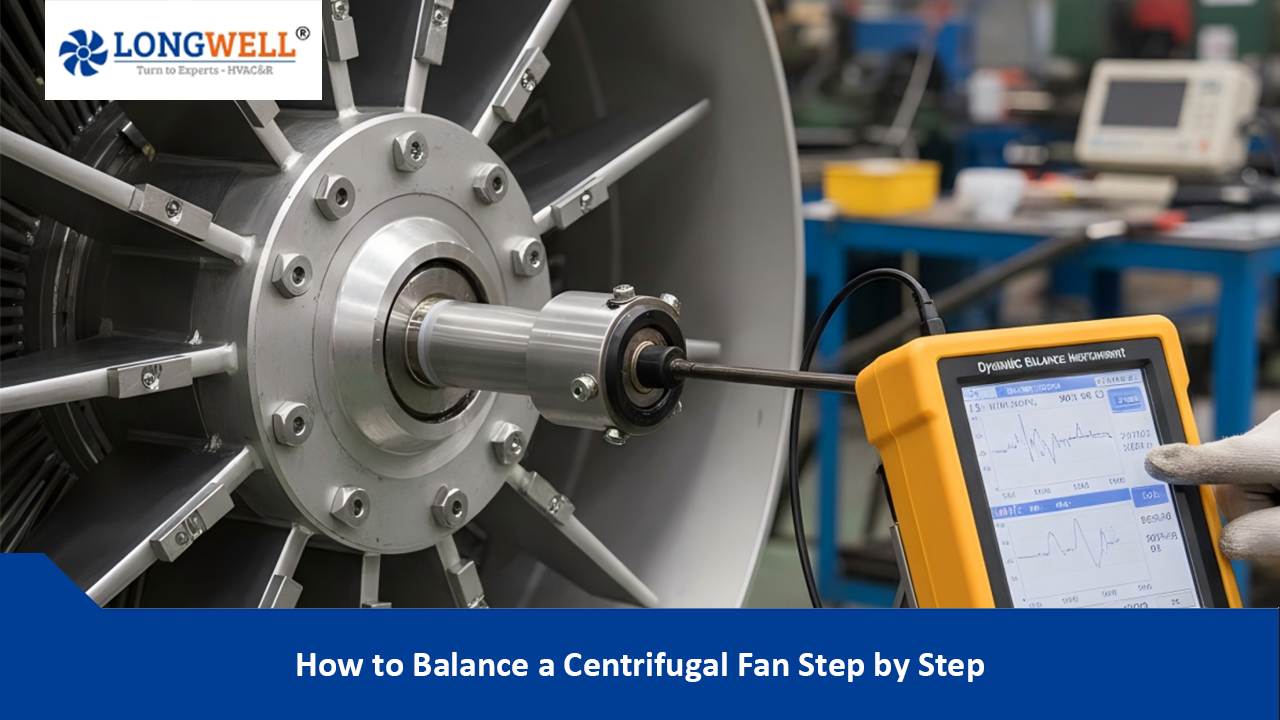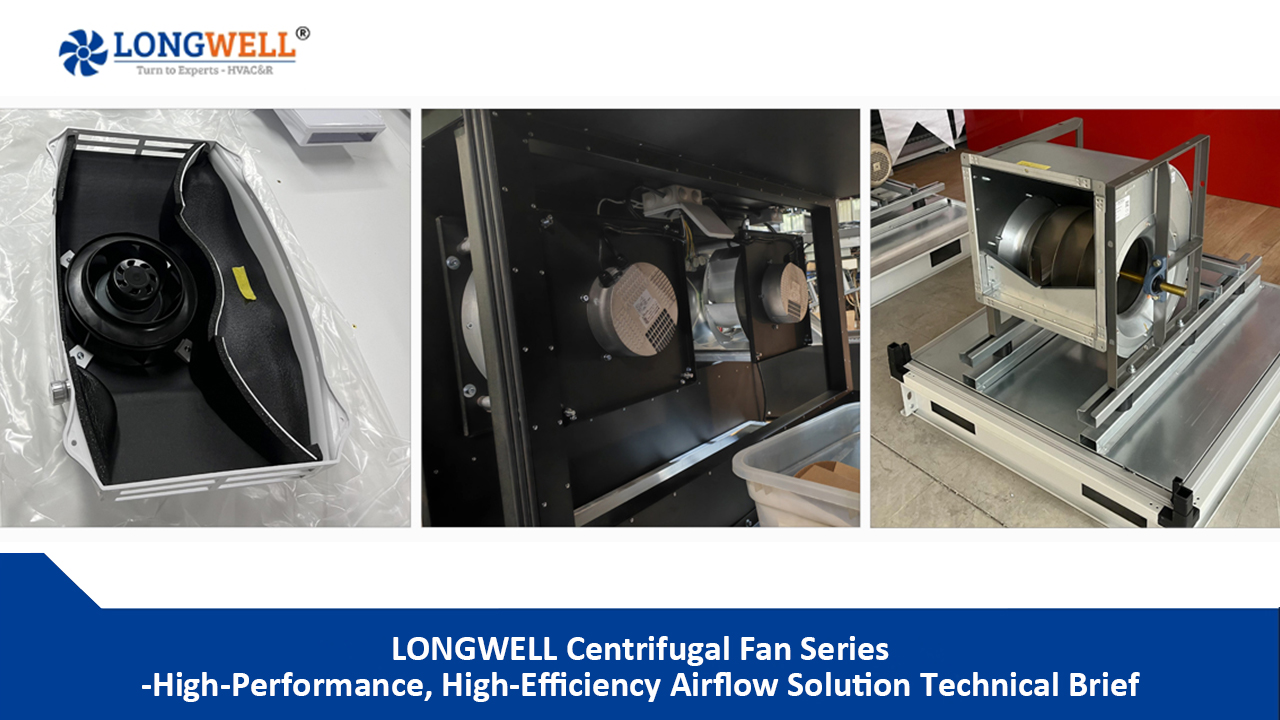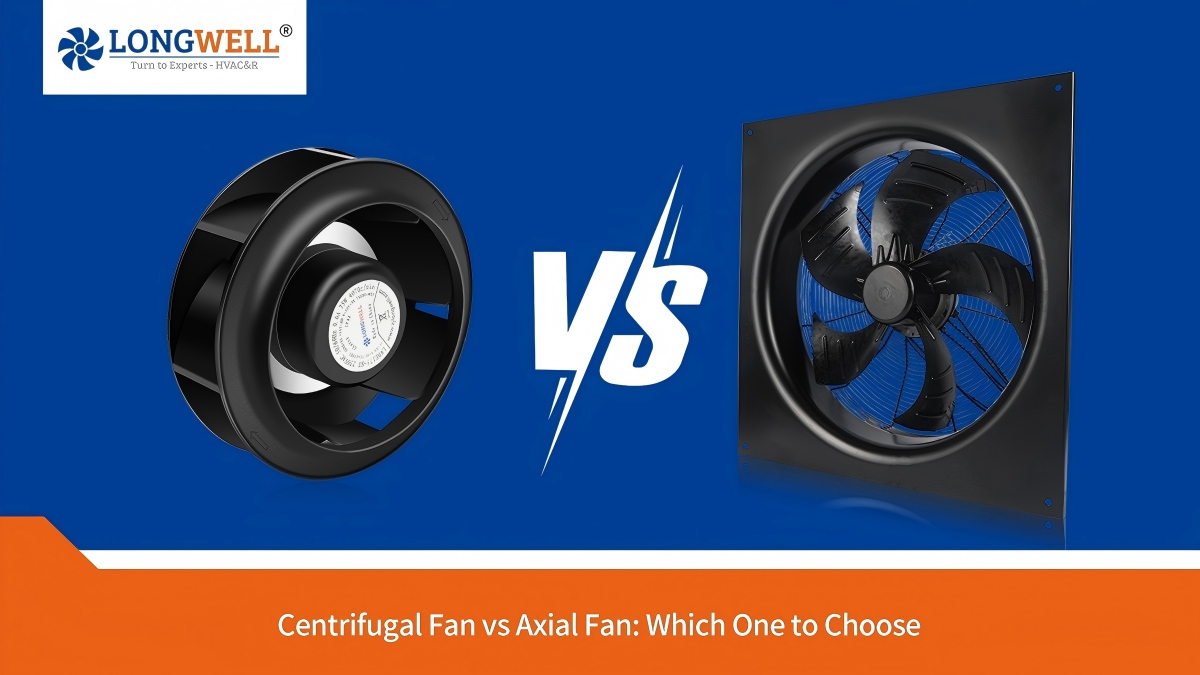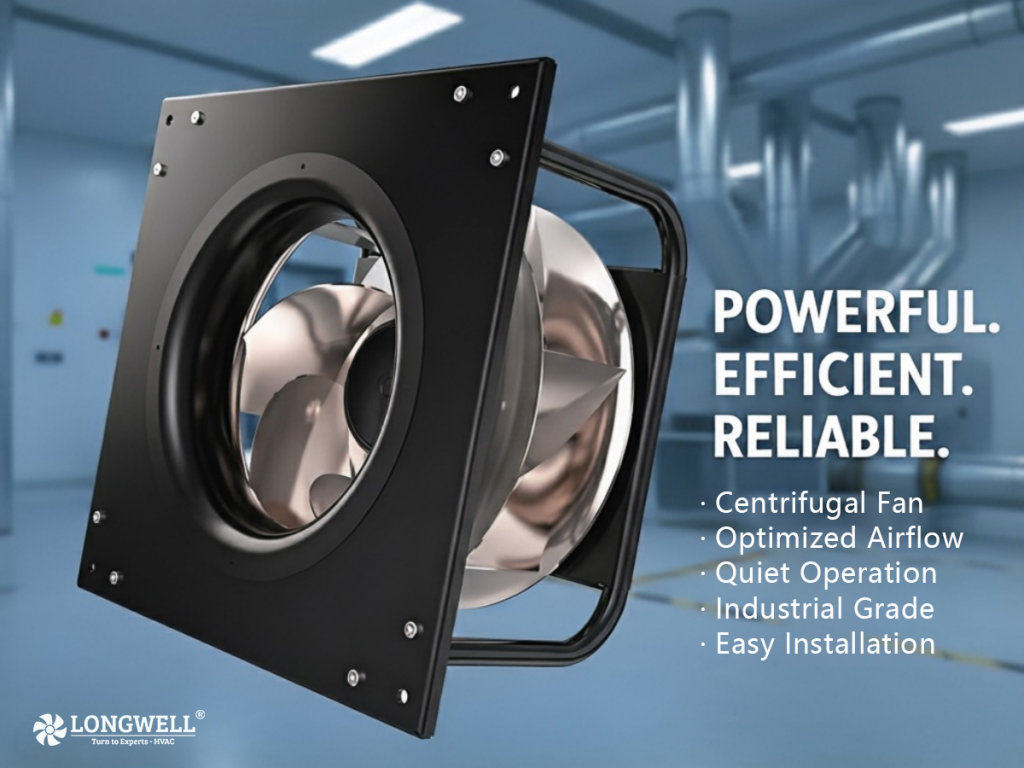
When you use a centrifugal fan, the impeller is very important. The impeller has a center hub with blades. These blades pull air into the middle. When the impeller spins, it pushes air outward. It uses centrifugal force to do this.
- This action makes the air move faster and raises its pressure.
- The fast-moving air goes through the fan housing to the outlet.
You get strong air flow and good pressure. This makes these fans great for high-pressure jobs.
Key Takeaways
- Centrifugal fans make high pressure by spinning an impeller. The impeller pushes air outward. This design works well for moving air in ducts and filters.
- Pick the right impeller shape and materialfor your job. Backward curved blades work best for high pressure. Stainless steel is strong and lasts a long time.
- Good housing design is very important. It helps guide air in a smooth way. This lowers turbulence and keeps high pressure. It also helps the fan work well.
- The motor power should fit what the fan needs. A stronger motor helps the fan work well, even with high pressure.
- Regular maintenance is very important. Keep the impeller and housing clean to stop blockages. This helps your centrifugal fan run well and last longer.
Centrifugal Fan Components
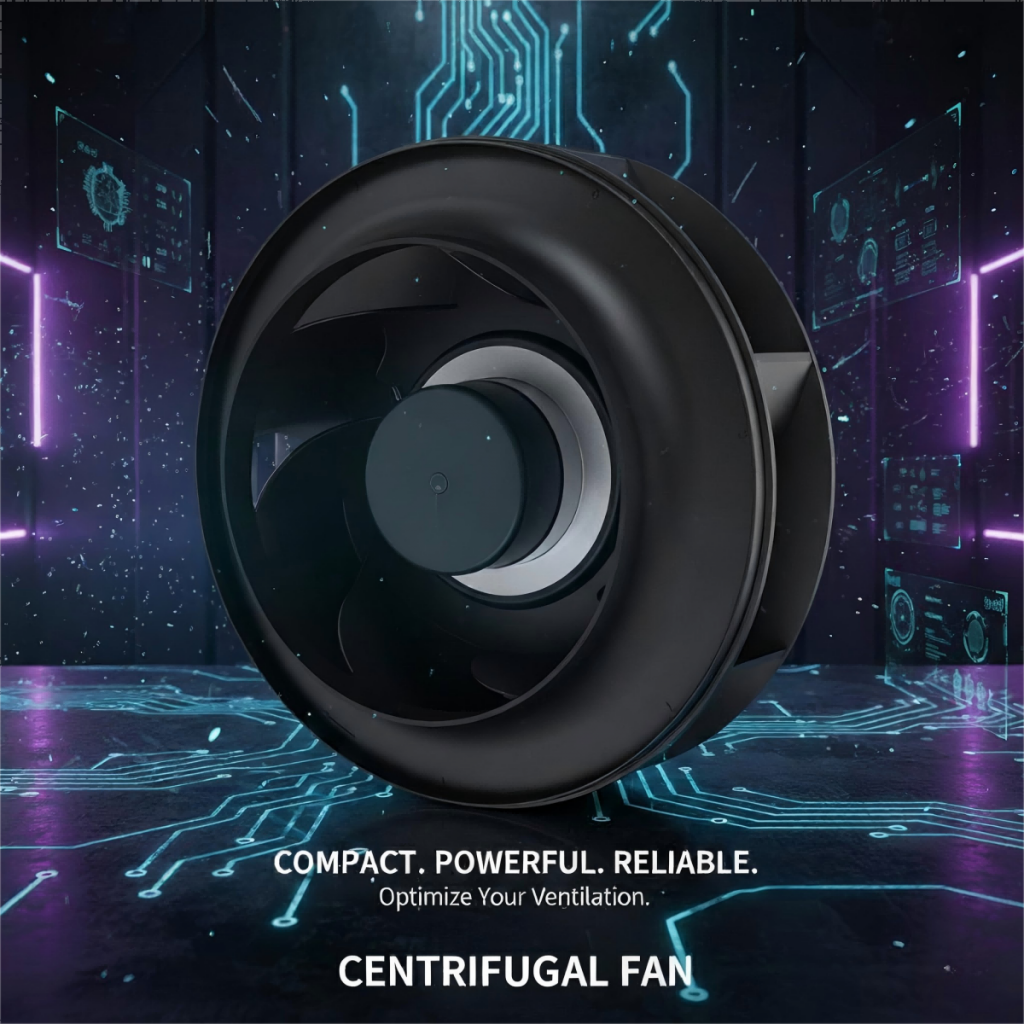
Centrifugal fans have three main parts. These parts help move air and make pressure. You should know about each part to see how the fan works in different places.
Impeller
The impeller is in the center of the fan. Its shape affects how well the fan works. Blades that curve backward make the fan work better and quieter. These blades are good when you want strong airflow and less noise. Radial blades are tough and can handle hard jobs. They do not get damaged easily by dust or water. You can use them in rough places. The impeller’s material is important too. Here is a table that shows what materials are used and where:
Material | Best For | Advantages |
SS (Stainless Steel) | Food, pharma, chemical industries | Strong, does not rust |
FRP (Fiberglass Reinforced Plastic) | Corrosive places | Light, does not rust |
PPFRP (Polypropylene FRP) | Acidic, chemical exhausts | Good against chemicals |
GI (Galvanized Iron) | General ventilation | Cheap, good for easy jobs |
Pick the impeller material that fits your needs. Stainless steel is strong and lasts long. FRP and PPFRP are good where there are chemicals. Galvanized iron is fine for simple air jobs.
Housing
The housing covers the impeller and guides air. It shapes the way air moves and helps build pressure. Good housing stops air from leaking and sends air smoothly to the outlet. It also keeps the impeller safe and makes the fan safer to use.
Motor
The motor makes the impeller spin. You need a motor with enough power for the pressure you want. The motor should be stronger than what the impeller needs. This helps the fan work well, even if it has to push hard. If the motor is too weak, the fan will not work its best. Always pick a motor that matches the fan for safe and good use.
Tip: When you choose centrifugal fans, check the impeller shape, housing quality, and motor power. These things decide how well the fan works for you.
How Centrifugal Fan Generates Pressure
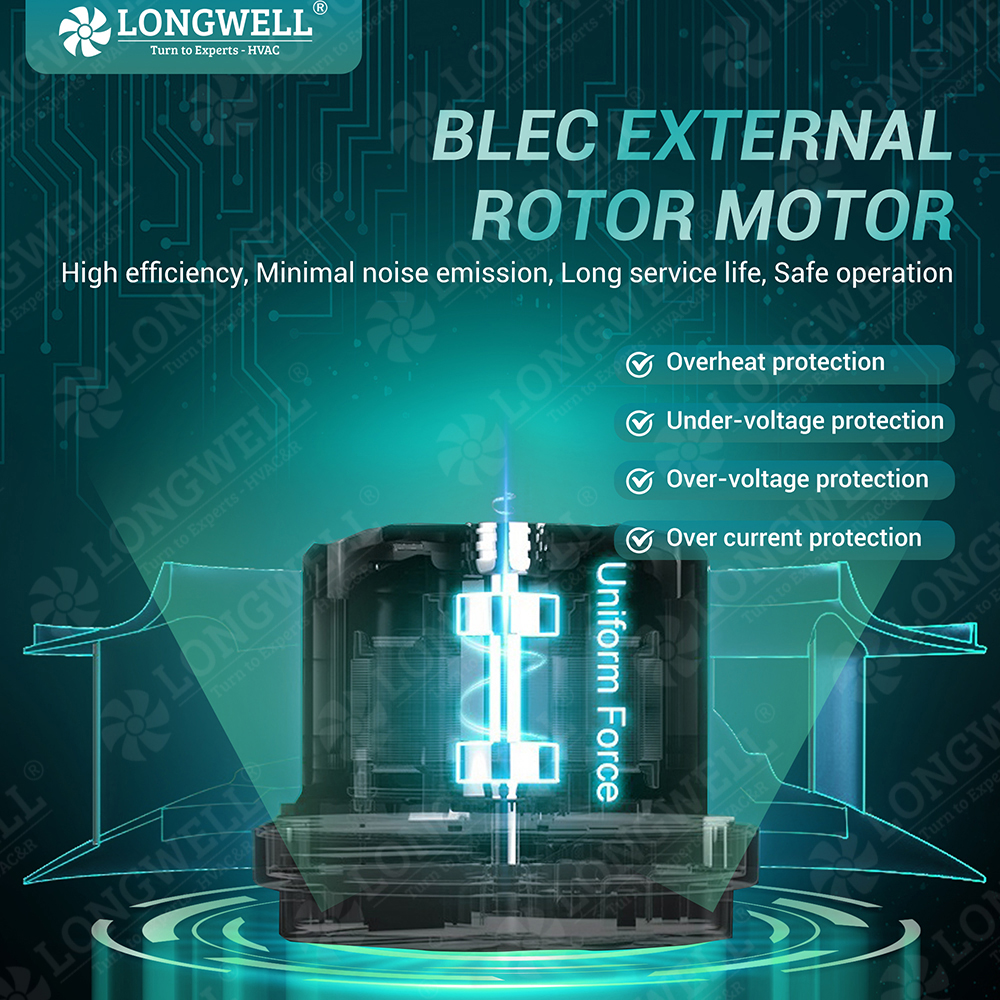
Airflow Path
When you look at a centrifugal fan, you see that air enters through the center of the impeller. The impeller sits inside the housing and spins quickly. As you turn on the fan, the impeller blades pull air straight into the middle. This is called the inlet. The air does not stay in the center. The spinning impeller throws the air outward, away from the center. The housing collects this moving air and guides it toward the outlet. You get a steady flow of air that moves from the center to the edge, then out of the fan.
Centrifugal Force
The impeller does more than just move air. It uses centrifugal force to push air outward. When the impeller spins, it creates a force that acts on the air. This force makes the air move faster as it travels from the center to the edge. The faster the impeller spins, the stronger the centrifugal force becomes. You can see this effect if you swing a bucket of water in a circle. The water stays in the bucket because the force pushes it outward. In a centrifugal fan, the same idea works. The impeller blades grab the air and fling it outward. This action increases the speed and energy of the air.
Pressure Conversion
As the air leaves the impeller, it moves very fast. This fast-moving air has what you call velocity pressure. The housing of the centrifugal fan helps slow down the air before it exits. When the air slows down, its velocity pressure changes into static pressure. This is the pressure you feel when you block the outlet with your hand. The fan creates a pressure difference between the inlet and the outlet. This pressure difference pushes air through ducts or pipes.
You need to know that the system connected to the fan can affect how much pressure the fan creates. If your ductwork has many bends, filters, or small spaces, it creates backpressure. Backpressure is the resistance the air faces as it moves through the system. When backpressure is high, the centrifugal fan must work harder to keep air moving. This extra effort can lower the pressure the fan produces. You should always check your system design to make sure the fan can handle the load.
Note: Centrifugal fans work best when you match the fan size and speed to your system needs. If you choose the right impeller and housing, you get better pressure and airflow.
Design Factors
Blade Shape
The shape of the blades changes how much pressure the fan makes. The impeller’s blade design controls how much air moves and how much pressure builds up. Here are some common blade types you might see:
- Forward curved blades move lots of air but make low pressure. These are good when you need lots of air in big open areas.
- Backward curved bladesare better for high-pressure jobs. These blades help the fan push air through ducts or filters. You get more pressure and use less energy.
If you need a fan for hard jobs, choose backward curved blades. Many new fans, like those from LONGWELL, use special blade shapes to make more pressure and work better. You can find out more about their designs at www.longwellfans.com.
Housing Geometry
The shape of the housing around the impeller is very important. Good housing helps air move smoothly and keeps pressure high. Here is what you should know:
- Good housing lowers air turbulence and saves energy.
- The scroll shape, cutoff angle, and tongue position change how much pressure the fan makes.
- Aerodynamic housings help the fan run quietly and use less energy.
When picking a centrifugal fan, look for smooth curves and tight seals in the housing. This helps you get the most pressure from your fan.
Tip: Fans with aerodynamic housings from top brands last longer and use less energy.
Airflow Rate
How much air moves through the fan changes the pressure you get. Here is how airflow and pressure work together:
- If more air moves, the pressure goes down.
- In open spaces, you get the most air but almost no pressure.
- If you block the outlet, pressure goes up but airflow stops.
- In a partly closed space, you get a mix of airflow and pressure.
You can also change pressure by making the impeller bigger or the motor faster. A bigger impeller or faster motor gives you more air and higher pressure. When you speed up the fan, both airflow and pressure go up. This follows the fan laws in engineering.
Advancement Type | Description |
Optimized Blade Design | Different blade types (forward-curved, backward-inclined, radial) change flow and pressure. |
Material Selection | Better materials make the fan last longer and work better. |
Aerodynamic Enhancements | Less turbulence and friction means more efficiency and pressure. |
Volute Design | Smooth shapes lower friction losses. |
Performance Optimization Techniques | Focus on lowering turbulence and friction while keeping good pressure. |
To get the best results, match the impeller, housing, and motor speed to your needs. This way, your centrifugal fan will give you the right pressure for your job.
Centrifugal Fans vs. Axial Fans
Pressure Comparison
Centrifugal fans and axial fans are different. Centrifugal fans make more pressure than axial fans. This is because their impeller spins and pushes air outward. Axial fans move air straight ahead, so they make less pressure. But axial fans can move more air at once. Here is a table that shows the main differences:
Fan Type | Maximum Static Pressure Capability | Airflow Characteristics |
Axial Fans | Relatively low pressure | High flow rate, airflow is mostly linear |
Centrifugal Fans | Higher pressure | Lower airflow rate, airflow is more radial |
If you need to move air through long ducts or filters, use a centrifugal fan. These fans are good for dust collection, drying, and HVAC systems. They work well when air must go through pipes or filters.
Efficiency
Centrifugal fans are better when you need high pressure. They keep airflow steady and use less energy for hard jobs. Axial fans are smaller and use less power, but they lose efficiency with resistance. Centrifugal fans do not lose performance in these cases. You get steady airflow and save energy, especially in big systems.
Centrifugal fans last longer because they use strong materials and smart blade shapes. They are also quiet, which is good for places where noise matters. The table below shows why centrifugal fans are good for high-pressure jobs:
Advantage | Description |
High Efficiency | Uses less energy with aerodynamic blades |
Excellent Performance | Keeps working well in high-pressure systems |
Durable Materials | Lasts longer and needs less maintenance |
Quiet Operation | Makes less noise, good for quiet spaces |
If you want strong pressure, steady air, and quiet running, pick a centrifugal fan. Many brands, like LONGWELL, make advanced centrifugal fans for these needs. You can learn more about them at www.longwellfans.com.
You can watch the impeller spin fast. It uses centrifugal force to push air out from the center. This makes strong pressure. Backward curved blades and good housing help the fan work better.
Feature | Centrifugal Fans | Other Fan Types |
Pressure Generation | High | Lower |
Air Movement | Radial | Axial |
Centrifugal fans are great for HVAC, dust collection, and moving materials. You can count on brands like LONGWELL (www.longwellfans.com) for strong, high-pressure fans.
FAQ
What is the main job of a centrifugal fan?
A centrifugal fan moves air by spinning an impeller. You get higher air pressure because the impeller pushes air outward. This helps you move air through ducts or filters.
How do you choose the right centrifugal fan for your needs?
You should check the pressure and airflow you need. Look at the impeller shape, housing design, and motor power. If you want reliable options, you can visit LONGWELL’s website: www.longwellfans.com.
Why does a centrifugal fan make more pressure than an axial fan?
A centrifugal fan uses centrifugal force to push air outward. This action builds up more pressure. Axial fans move air straight, so they make less pressure.
How can you keep your centrifugal fan working well?
- Clean the impeller and housing often. Check for dust or blockages. Make sure the motor runs smoothly. Regular care helps your fan last longer and work better.
See Also
Understanding The Performance Traits Of Centrifugal Fans
The Importance Of Centrifugal Fans In HVAC And Industry
Key Factors Affecting The Efficiency Of Centrifugal Fans
Achieving High Energy Efficiency With Longwell Centrifugal Fans
